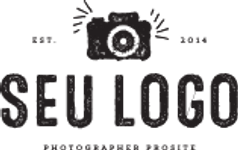The Environmental Testing Equipment Market is a critical and rapidly expanding sector dedicated to monitoring, analyzing, and safeguarding the health of our planet. These sophisticated tools and systems are indispensable for detecting pollutants, assessing environmental impacts, and ensuring compliance with increasingly stringent regulations across air, water, and soil. The market's growth is driven by escalating global environmental concerns, heightened public awareness, and continuous technological advancements.
Market Overview and Size
The global environmental testing equipment market was valued at approximately USD 1.23 billion in 2024 (Source 1.1) or USD 3.41 billion in 2024 (Source 1.2). Despite variations in these figures, the market is on a strong growth trajectory. It is projected to reach around USD 1.87 billion by 2029 (Source 1.1) or USD 5.62 billion by 2030 (Source 1.2), with Compound Annual Growth Rates (CAGRs) ranging from 7.1% to 9.0% during the forecast periods. This significant expansion is primarily fueled by:
Escalating Environmental Pollution: Rapid industrialization, urbanization, and various human activities contribute to rising levels of air, water, and soil pollution, necessitating continuous monitoring and testing (Source 1.1, 2.4).
Stringent Regulatory Compliance: Governments worldwide are implementing and enforcing stricter environmental regulations and policies, compelling industries to adopt advanced testing equipment to ensure adherence (Source 1.1, 1.4, 2.1, 3.4).
Increasing Environmental Awareness: Growing public concern about climate change, pollution, and their impact on public health is driving demand for comprehensive environmental monitoring solutions (Source 1.2, 1.4, 2.4).
Emerging Contaminants: The need to detect and analyze new and complex pollutants like PFAS (per- and polyfluoroalkyl substances), microplastics, and pharmaceutical residues is creating new market opportunities (Source 1.1, 3.1, 3.3).
Market Share and Key Players
Geographically, North America holds the largest market share (around 38% to 42% in 2023/2024), attributed to its robust regulatory environment, advanced technological infrastructure, and high investments in environmental protection (Source 1.1, 1.3, 1.4, 1.5, 2.1). Asia Pacific is expected to be the fastest-growing region, driven by rapid industrialization, increasing pollution concerns, and improving environmental standards in developing countries (Source 1.1, 1.5, 2.3).
By product, Chromatography Products (including Gas Chromatography and Liquid Chromatography) hold a significant market share (around 43% in 2023) due to their versatility and precision in detecting a wide range of contaminants (Source 1.1, 2.1). Mass Spectrometers and Molecular Spectroscopy Instruments are also key product segments (Source 1.1). In terms of application, Water Testing accounts for the largest share, emphasizing the critical importance of water quality for public health and industrial operations (Source 1.3, 2.1).
Key players in the global environmental testing equipment market include:
Agilent Technologies Inc.
Thermo Fisher Scientific Inc.
Shimadzu Corporation
Waters Corporation
PerkinElmer Inc.
SGS SA
Eurofins Scientific
Element Materials Technology
Bureau Veritas
These companies are actively engaged in research and development, strategic acquisitions, and product innovation to enhance sensitivity, accuracy, and throughput of their testing solutions (Source 1.2, 2.1, 2.3).
Key Trends
Several transformative trends are shaping the environmental testing equipment market:
IoT Integration and Smart Sensors: The integration of IoT and smart sensors enables continuous, real-time data collection on air, water, and soil quality, allowing for immediate alerts and predictive maintenance (Source 1.1, 3.2, 3.3).
Automation and Digitalization: Laboratories are increasingly adopting automated sample preparation systems, robotic workflows, and cloud-based platforms to enhance efficiency, reduce human error, and streamline data management and reporting (Source 3.1, 3.2, 3.3).
Portable and Field-Deployable Devices: The demand for compact, portable, and field-deployable testing equipment is growing, enabling on-site analysis and rapid detection of contaminants (Source 1.1, 3.3).
Advanced Analytical Technologies: Innovations in high-resolution mass spectrometry (HRMS), advanced oxidation processes (AOPs), and electrochemical disinfection are enhancing the ability to detect emerging and complex contaminants at ultra-trace levels (Source 3.1).
Data Visualization and Big Data Analytics: Advanced analytics platforms are processing vast datasets from testing equipment to extract actionable insights, predict environmental trends, and support data-driven decision-making (Source 1.1, 3.2).
Sustainability in Testing: Laboratories are prioritizing sustainable practices by minimizing waste, reducing energy consumption, and adopting green chemistry techniques in their operations (Source 3.1).
Conclusion
The Environmental Testing Equipment Market is on a robust growth trajectory, driven by the escalating need to address global environmental challenges and comply with evolving regulatory landscapes. The continuous innovation in testing technologies, particularly towards smart, automated, and portable solutions, is crucial for effective pollution control and environmental management. This market plays an indispensable role in safeguarding public health and promoting a sustainable future.
PR Power and Influence
"PR Power" in the environmental testing equipment market refers to the strategic public relations efforts of manufacturers and service providers to:
Build Trust and Credibility: Emphasizing the accuracy, reliability, and scientific rigor of their testing solutions to regulatory bodies, industrial clients, and the public (Source 5.1, 5.2).
Showcase Technological Leadership: Highlighting breakthroughs in detection limits, automation, and real-time monitoring capabilities through scientific publications, industry conferences, and case studies (Source 5.1, 5.3).
Educate Stakeholders: Informing industries and government agencies about the benefits of proactive environmental monitoring, risk mitigation, and compliance with evolving environmental standards (Source 5.1).
Advocate for Environmental Stewardship: Positioning companies as key enablers of sustainable practices and environmental protection, aligning with broader societal goals (Source 5.1, 5.2).
Crisis Communication: Transparently addressing environmental incidents or testing challenges to maintain public confidence and demonstrate commitment to environmental responsibility
About Us:
SNS Insider is one of the leading market research and consulting agencies that dominates the market research industry globally. Our company's aim is to give clients the knowledge they require in order to function in changing circumstances. In order to give you current, accurate market data, consumer insights, and opinions so that you can make decisions with confidence, we employ a variety of techniques, including surveys, video talks, and focus groups around the world.
Contact Us:
Jagney Dave - Vice President of Client Engagement
Phone: +1-315 636 4242 (US) | +44- 20 3290 5010 (UK)
Trending Reports:
Photomask Repair System Market
Failure Analysis Test Equipment Market
